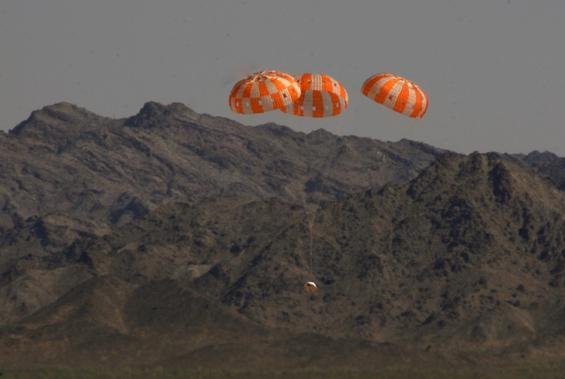YUMA, Ariz., June 26 (UPI) -- NASA's Orion capsule is one step closer to the real deal after the spacecraft's parachute system was successfully deployed yesterday.
In a trial run late Wednesday, the craft was taken 35,000 feet above U.S. Army's Yuma Proving Ground by a C-17 aircraft and dropped -- making it more of test fall than a test flight. The craft's parachute system performed ideally, enabling Orion to return softly to the Arizona desert sands below.















